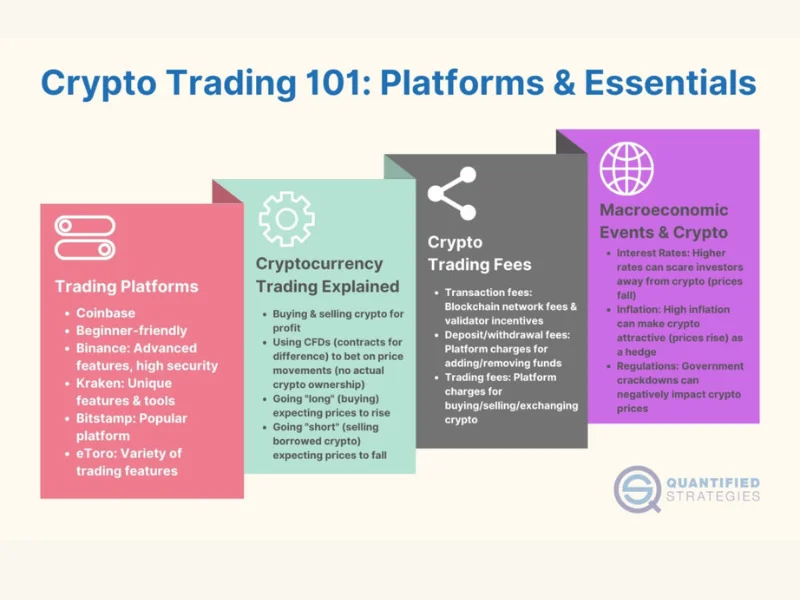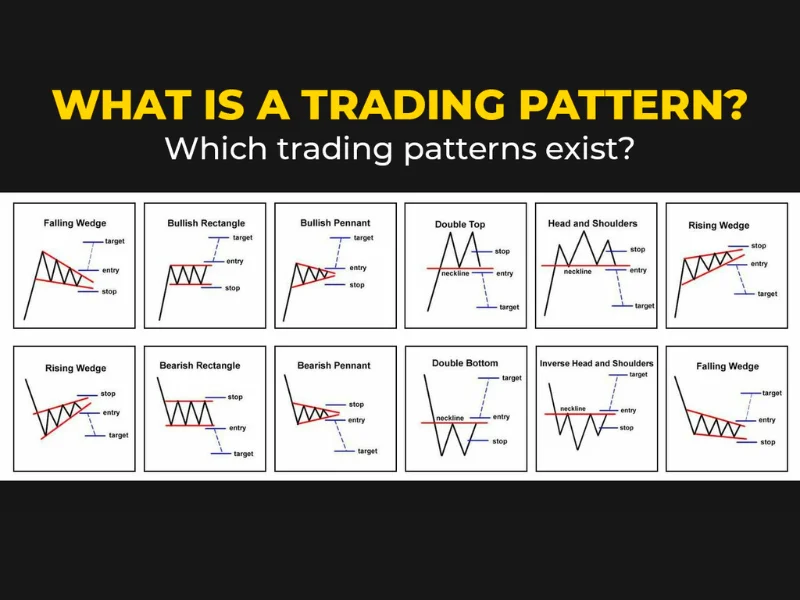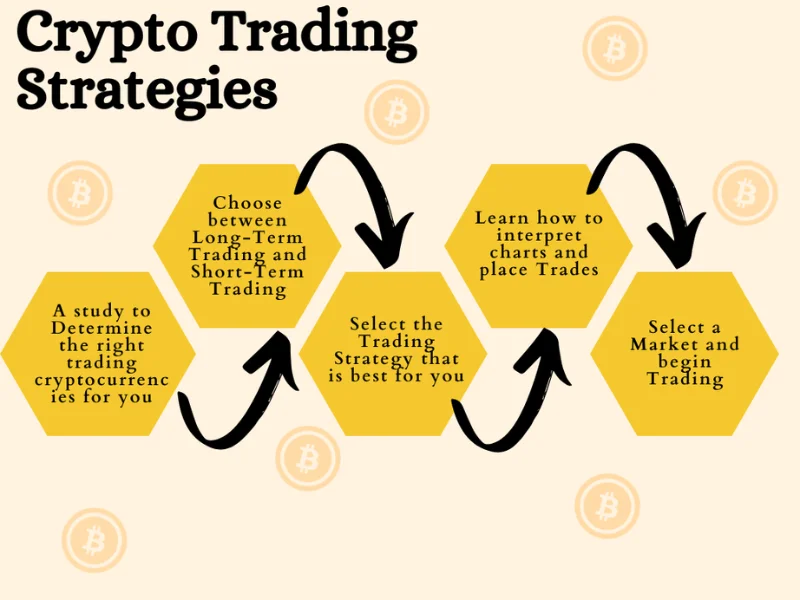1) Introduction
Purpose of the article
This guide does two jobs at once:
- it gives you a practical, Chart Patterns-driven playbook for reading crypto charts (bullish, bearish, and continuation structures); and
- it layers those TA basics on top of the latest market context—covering global capitalization, institutional flows, technology upgrades, regulation, adoption, and on-chain activity—so you can apply patterns where they matter right now. We lean on trusted, professional sources throughout (e.g., CoinDesk, Glassnode, Bloomberg Crypto Chart Patterns, CoinShares, Kaiko, DeFiLlama, CoinGecko/CoinMarketCap) and link specific datapoints as we go.
Why staying updated matters
In crypto, narrative + liquidity set the backdrop for patterns. A triangle break on BTC behaves differently when the market is risk-on, ETFs are pulling in billions, or when policy headlines are whipsawing sentiment. Recent months have seen record global market cap milestones and heavy ETF flows, resetting levels where classic patterns form and fail.
What we’ll cover
Key themes threaded through the TA section and the market review:
- Market movements: cap, leaders (BTC, ETH), L2 throughput.
- Tech upgrades: Ethereum’s Dencun (EIP-4844), the upcoming Pectra workstream, Solana’s Firedancer client. SanbaseNansen
- Regulation: SEC/MiCA pivots and headline cases.
- Adoption & on-chain: L2 dominance, DeFi TVL/liquidity, smart-contract usage. CoinDesk
2) Global Market Trends
Current market performance & capitalization
The global crypto market cap has hovered around multi-trillion territory through mid-Q3, with Bitcoin and Ether continuing to dominate share. CoinGecko’s live global pages and asset dashboards remain the quickest way to check the exact levels, plus 24-hour/7-day movements for BTC and ETH. Complementing that, Reuters highlighted the market surpassing the $4T mark during July’s risk-on burst—useful context for understanding where pattern breakouts are occurring relative to all-time capitalization. blockdaemon.com
How to read it with TA: when total cap is expanding and BTC dominance is steady or rising, continuation patterns (flags/pennants) on BTC tend to resolve more cleanly; when dominance is falling while cap rises, altcoin breakouts from bases/triangles often gain follow-through.
Trend snapshots: use CoinGecko tickers to scan 24h/7d deltas, then open the chart and inspect:
- BTC: look for bull flags after impulsive ETF-driven rallies; faded flags or false breakouts when macro jitters spike. CoinDesk
- ETH: post-Dencun, ETH’s L2 cost compression shifted activity to L2s—watch symmetrical triangles and ascending channels for context around fee-driven usage cycles. Sanbase
Institutional involvement & macro influence
Flows: CoinShares’ weekly reports show record-setting inflows this summer, including new highs for weekly and monthly allocations into digital-asset products—useful for anchoring the “big hands behind the move” when you see large bull pennants or breakaway gaps.
Who’s moving markets: U.S. spot ETF demand (with BlackRock’s IBIT crossing 700k BTC) has reframed BTC’s liquidity profile, while Grayscale’s GBTC—still large, but fee-sensitive—has seen AUM and holdings data updated regularly on its fund page. These shifts affect how cleanly BTC respects classical support/resistance in trending phases.
Corporate treasuries: MicroStrategy continues to be a bellwether for “buy-the-dip” corporate behavior; July reporting and subsequent updates confirmed substantial additions this summer, reinforcing the idea that deep pullbacks into prior breakout zones (classic “throwbacks”) can attract non-retail demand.
Macro: Kaiko’s research notes that correlations between BTC and equities wax and wane; spikes in correlation can reduce the reliability of chart patterns during macro data weeks (CPI/FOMC/Jackson Hole), while decoupling phases can let TA play out more cleanly.
3) Technological Developments and Innovations
Blockchain advancements (ETH, SOL, L2s)
- Ethereum Dencun (EIP-4844) introduced proto-danksharding, massively reducing L2 data costs; most transaction volume now occurs on L2s, not L1. From a TA perspective, this has shifted “growth charts” to Base/Arbitrum ecosystems—continuation patterns on L2 tokens often coincide with usage surges. Sanbase
- Pectra (the next major Ethereum workstream) continues through 2025 planning—keep an eye on upgrade calendars when trading pattern breakouts on ETH core infra/validator-adjacent names. Nansen
- Solana’s Firedancer client (Jump Crypto) is deep into testing to improve throughput and client diversity; “Frankendancer” components have already touched mainnet. For traders, network performance headlines can catalyze cup-and-handle or ascending-triangle resolves on SOL and ecosystem names.
On-chain support: Glassnode dashboards and Messari network “State of” reports are good companions: higher active addresses, transactions, and staking often coincide with larger base formations (multi-month rectangles) that precede trend expansions.
Security enhancements in crypto
Zero-knowledge proofs (ZK-SNARK/STARK) and their rollup implementations have matured; Ethereum’s docs are an authoritative explainer for how ZK-rollups scale while preserving validity proofs. For chart traders, security incidents (or the lack thereof) can shape gap behavior and recovery “V-bottoms” across DeFi tokens. Track protocol safety and exploit tallies with DeFiLlama’s hack dashboards.
The impact of smart contracts & dApps
Messari sector reports and Dune’s wallet/activity studies show rising dApp usage (particularly on L2s and emerging L1s). In TA terms, growth in unique wallets and DEX volume tends to correlate with more reliable base breakouts in ecosystem tokens, while usage cliffs often print distribution tops (double tops/head-and-shoulders).
4) Regulatory & Legal Landscape
Current regulatory updates
- EU (MiCA): Stablecoin rules are already in force; broader licensing obligations are live, with ongoing delegated/implementing acts. Expect region-specific catalysts (e.g., exchange delistings or disclosures) that can trigger knee-jerk wicks through support/resistance.
- U.S.: The SEC’s stance is evolving; 2025 has brought initiatives to modernize crypto oversight (“Project Crypto Chart Patterns”) and a lighter litigation footprint than 2023–24, a backdrop that can improve follow-through on bullish chart structures when policy uncertainty fades. Always sanity-check official statements and major-press coverage.
Legal cases & precedents
Litigation around Binance, Ripple, and Coinbase continues to shape risk perception. Reuters coverage of settlements and case outcomes is the most tradable signal for intraday patterns (long wicks, gaps). Big legal headlines regularly create breakaway gaps or bull traps, so manage stops accordingly.
5) Adoption & Market Sentiment
Retail and institutional adoption
CoinShares’ manager surveys and weekly flows point to steady institutional participation—even as concerns rotate (custody, access, fees). For TA, steady ETF inflows often reinforce trend channels and flag resolutions.
Social media & influencer effects
Santiment/Messari commentary plus CoinDesk market columns are helpful for spotting social dominance spikes, which often coincide with exhaustion gaps on overheated small caps. Be wary: sentiment-driven pumps love to fake out above resistance before dumping back into the range.
6) On-Chain & Liquidity
Tracking on-chain activity
Active addresses, transaction counts, miner/validator flows (Glassnode, CryptoQuant) help you judge whether a breakout has fundamental fuel or if it’s likely to fail. Rising active entities + falling exchange reserves, for example, can support ascending triangles on BTC during accumulation.
Liquidity and market microstructure
Kaiko’s depth/spread research is essential for spotting where false breakouts may occur (thin books + elevated volatility). Low depth = respect measured-move targets less and take profits sooner on flags/pennants; high depth = pattern targets more reliable. DeFiLlama’s TVL also flags where on-chain liquidity can support trend continuation on DeFi governance tokens. CoinDesk


7) Emerging Trends & Outlook
NFTs
Policy and speech-rights debates (CoinCenter) and periodic volume spikes in gaming and collectibles recur. In TA, NFTs rarely follow classic OHLC patterns directly, but NFT-adjacent tokens do—watch for cup-and-handle on marketplace/infra tokens when new mints or licensing deals surge.
DeFi’s continued evolution
Use DeFiLlama to rank platforms (Aave, Uniswap, etc.). Higher TVL and fee revenue often precede rectangle breakouts after long consolidations. CoinDesk
Stablecoins and CBDCs
Central-bank attention remains elevated (BIS/IMF), even as opinions diverge on retail CBDCs. Stablecoin regulation (MiCA; various U.S. proposals) matters to liquidity pairs—watch for gap opens and volatile retests on stablecoin news days.
8) Investor Insights & Risk Management
Behavior patterns
Nansen/Santiment studies frequently show herding—the same wallets chase momentum into resistance. On charts, that shows up as climactic volume into prior highs (classic double-top risk). Pair TA with positioning data when possible. Kaiko Research
Risk management in volatile regimes
Messari’s research and institutional primers emphasize position sizing, stop placement, and hedging (perps/options) over prediction. For pattern trades, define invalidation (e.g., below the handle low in a cup-and-handle; below the flag’s lower bound) and pre-commit to scaling out near measured targets.
9) Case Studies & Market Examples
Bitcoin halving & price structure
Historically, halvings alter supply dynamics and often accompany multi-month base breakouts. The latest halving in April 2024 prefaced a strong 2025 rally, with ETF flows acting as a second engine. Examine BTC’s weekly chart: bases/flags forming around halving narratives typically see measured moves equal to the depth of the base.
Ethereum’s post-Merge, post-Dencun regime
Fees/throughput shifts have pushed activity to L2s. ETH’s mid-cycle consolidations (symmetrical triangles) often break on upgrade dates or validator economics headlines—mark upgrade windows on your chart and trade retests, not initial spikes. Sanbase
10) Impact of Global Events
Macro & inflation
CoinShares’ weekly notes and Kaiko’s macro studies show that expectations around rates/liquidity frequently line up with breakout weeks on BTC. Into major macro events, textbook patterns can underperform due to gap risk—size down or wait for retests.
Geopolitics
Reuters/Bloomberg Crypto Chart Patterns coverage of regulatory shifts and cross-border finance (ETFs abroad, futures listings) often coincide with gap opens on region-sensitive tokens and exchanges. Keep a news feed alongside your charts.
11) Key Insights from Industry Experts
- CoinDesk Outlooks: adoption likely tracks clarity + institutions + tech; that triad is a fair mental model when judging whether a pattern has runway.
- CoinBureau: cycles can peak sooner than consensus—use that as a reminder to trail stops aggressively on extended moves.
- Bloomberg Crypto interviews (e.g., Joe Lubin) continue to emphasize institutional rails for ETH—structural tailwinds that favor higher-time-frame bases.
12) Conclusion — Putting TA to Work in Today’s Market
Recap:
- Market structure is supportive (multi-trillion cap, ETF demand), but regulation and macro still inject day-to-day noise. blockdaemon.com
- Tech upgrades (Dencun/L2s, Firedancer) shift where the cleanest patterns show up (L2 ecosystems, high-throughput chains).
- On-chain/liquidity metrics help you filter breakouts from fakeouts; always check depth/TVL before sizing. CoinDesk
Call to action:
Make a simple routine:
- scan global cap & leaders;
- tag macro/reg headlines on your calendar;
- monitor on-chain/liquidity;
- then execute one or two high-quality pattern setups with predefined invalidation. Keep your feeds anchored to sources like CoinDesk, CoinShares, Glassnode, DeFiLlama, Kaiko, and CoinGecko for unbiased context. CoinDesk
Appendix — The Chart-Pattern Toolkit (Cheat Sheet)
How to use this section: start with the trend, then identify the pattern, then set invalidation and a measured target. Crypto Chart Patterns moves fast—use the retest (confirmation) rather than chasing the first breakout candle.
1) Support & Resistance (S/R)
- Use: Mark weekly/daily S/R; combine with volume spikes.
- Invalidation: Close back inside the prior range after a breakout.
2) Trendlines & Channels
- Use: Respect rising channels in bull trends; fade overthrows.
- Target: Opposite channel boundary; break = trend change.
3) Triangles (symmetrical, ascending, descending)
- Use: Compression before expansions; ascending triangles in uptrends are especially reliable on BTC.
- Target: Height of triangle added to breakout point.
- Invalidation: Break back through the apex.
4) Flags & Pennants
- Use: Continuation after a sharp impulse; best with rising volume on the breakout.
- Target: Length of the flagpole projected from breakout.
- Invalidation: Lose the flag’s lower trendline with volume.
5) Rectangles (Ranges/Bases)
- Use: Accumulation/distribution. Watch for spring + test patterns before expansion.
- Target: Range height from the breakout.
6) Head-and-Shoulders / Inverse H&S
- Use: Trend reversals; neckline break is key.
- Target: Head-to-neckline distance projected.
- Invalidation: Reclaim of neckline with volume.
7) Double Top/Bottom
- Use: Retests of prior high/low; look for momentum divergence.
- Invalidation: Higher high (for double top) or lower low (for double bottom).
8) Cup-and-Handle
- Use: Long bases in growth tokens; handle should drift lower on light volume.
- Target: Cup depth from breakout.
- Invalidation: Handle breaks its low.
9) Wedges (rising = bearish bias; falling = bullish bias)
- Use: End-of-trend patterns; expect a throw-over and sharp reversal.
- Invalidation: Sustained close back above the wedge (for bearish wedge) after breakdown.
10) Fibonacci Retracements/Extensions
- Use: Confluence with S/R and prior structure; common crypto pullback zones 38.2%–61.8%.
- Invalidation: Strong close through the 61.8% in the opposite direction of your bias.
Risk rules for all patterns
- Size for max loss first (position sizing).
- Prefer retests over naked breakouts.
- Respect event risk (FOMC/ETF/reg headlines).
- Trail stops once 50–61.8% of the target is hit.


13) FAQs (Quick, Practical & Current)
1) Which chart patterns work best on Bitcoin right now?
Ascending triangles and bull flags on higher time frames (daily/weekly) tend to work best during strong ETF inflow periods—confirm with volume and avoid trading right into macro data releases.
2) Do patterns still work if BTC’s correlation with stocks changes?
Yes, but reliability varies. When correlation spikes, expect more false breakouts around equity-market opens; when it fades, patterns often respect targets better.
3) How do Ethereum’s upgrades affect TA?
Post-Dencun, activity shifted to L2s; that’s where you often find the cleanest continuation setups. Track upgrade windows (e.g., Pectra planning) on your chart calendar. SanbaseNansen
4) Does regulatory news really move patterns?
Absolutely. MiCA roll-outs and U.S. SEC shifts can cause gaps and invalidate setups intraday. Trade retests after the headline whenever possible.
5) Where can I check if a breakout has on-chain “fuel”?
Use Glassnode/CryptoQuant for exchange reserves, active addresses, and flows. Rising usage with declining exchange balances supports bullish resolves.
6) What about liquidity—how do I avoid getting wicked out?
Check Kaiko depth/spreads and DeFiLlama TVL. Thin books amplify stop-hunts; in those pairs, take partials earlier and use wider—but smaller—position sizes. CoinDesk
7) Are NFTs investable with TA?
NFT floor charts are idiosyncratic, but NFT-adjacent tokens (marketplaces, infra) do respond well to bases and cup-and-handles when volumes pick up. Track policy discourse via CoinCenter.
8) What single indicator should I pair with patterns?
Volume first. If you add one more, use RSI for spotting divergence at double tops/bottoms. Indicators support the pattern; they don’t replace it.
9) How do I manage event risk (Fed, ETF, lawsuits)?
Reduce size into events, avoid tight stops near obvious levels, and prefer post-headline retests of the breakout area. Track legal/reg calendars via Reuters/CoinDesk.
10) What are the most reliable sources for ongoing research?
For news and policy: CoinDesk, Reuters. For flows/liquidity: CoinShares, Kaiko. For on-chain: Glassnode, CryptoQuant. For market cap/prices: CoinGecko. For DeFi TVL: DeFiLlama. CoinDesk
